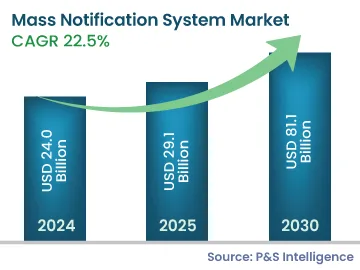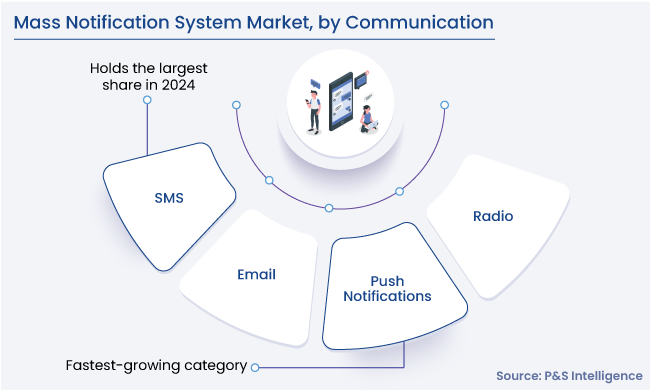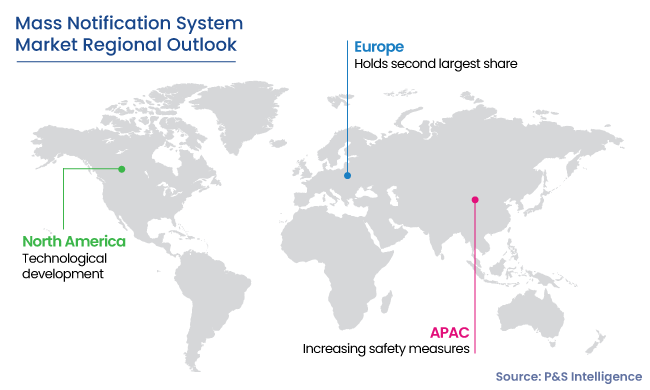Mass Notification System Market Analysis
The size of the mass notification system market is estimated at USD 24.0 billion for 2024, and it is projected to grow at a CAGR of 22.5% from 2024 to 2030, reaching USD 81.1 billion by 2030.
With such a system, emergency notifications as well as general messages and reminders are sent to educational institutions, businesses, citizens, industrial workers, and other stakeholders.
One major factor fueling this market is global warming and the rise in the frequency of natural and manmade disasters and pandemics. For instance, according to Our World in Data, 341 natural disasters were reported in 2018, which increased to 423 in 2022. These factors make it vital to have an effective communication platform that can notify organizations and individuals of these situations and also provide instructions on how to keep everyone safe.
Due to the ability of these systems to notify huge populations at once, investors are spending a lot of money on them, so that the players can enhance their abilities and risks can be avoided as much as possible.
Another key reason behind their increasing adoption is that they play a crucial role in disaster recovery and resilience within organizations. This system allows organizations to make contact with staff members, consumers, and colleagues during times of operational disturbances, such as security breaches, power outages, building collapses, radiation leakages, and boiler explosions. With successful communication, those who invest in end-use businesses also get to know the situation, which allows them to take necessary and appropriate actions to reduce the effect on productivity and the operations.
Moreover, not only for emergencies, these systems are also used for non-emergency situations. For instance, educational academies use this platform to contact students and staff members to inform them about upcoming events, campus facilities, and class schedules.
Additionally, nowadays, these platforms provide two-way communication, so that receivers can also notify authorities of their safety in times of emergencies, as well as offering feedback on the quality of the communication received from this system.





